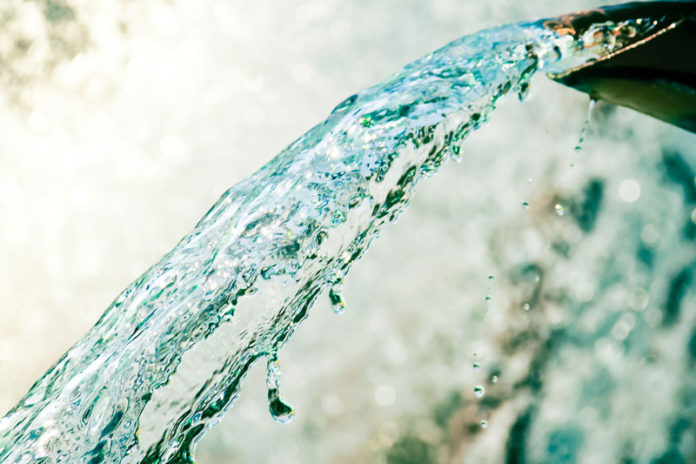Cassidy Yates, MS student, Department of Civil and Environmental Engineering, University of New Hampshire
James P. Malley, Jr., Ph.D., editor-in-chief, UV Solutions, professor of civil and environmental engineering, Department of Civil and Environmental Engineering, University of New Hampshire
Editor’s Note: Owners and operators of UV technology are an important stakeholder group; these professionals have limited time and often prefer to remain anonymous when providing feedback. As a result, UV Solutions now builds this column from responses to a Qualtrics survey sent out each quarter with the help of UNH graduate students.
The increasing number of severe weather events has placed unprecedented pressures on drinking water resources. Integrated Water Supply Management (IWSM) planning across the globe now includes a greater focus on water reuse. The objective of this column is two-fold: 1) report how facilities are incorporating UV technologies as part of their water reuse facilities; and 2) identify maintenance and operation concerns, experiences and solutions developed at these facilities. Seven responses addressing nine facilities were received for this survey.
How is UV Applied at Your Water Reuse Facility?
The following applications of UV in water reuse facilities were found in the survey replies:
- Conventional wastewater treatment facility effluent is treated by sand filtration, UV disinfection and then land applied to offset needs.
- Advanced water treatment processes are followed by UV and hydrogen peroxide, then biological filtration on GAC for indirect potable water reuse.
- Advanced water treatment processes are followed by RO, UV and hydrogen peroxide, then biological filtration on GAC for direct potable water reuse.
- Advanced wastewater treatment processes with tertiary filtration are followed by full or split-stream partial RO which flows into UV hydrogen peroxide, followed by GAC and chlorination for indirect potable reuse.
- Advanced wastewater treatment processes with tertiary filtration are followed by RO which flows into UV hydrogen peroxide, followed by GAC and chlorination for direct potable reuse.
Describe the Lessons Learned from Applying UV Technology
The first response noted that successful operations have been underway for many years; operational costs for energy and hydrogen peroxide were higher than anticipated; and efforts to improve the sustainability of these parts of the process occur on an annual basis. Improved monitoring has identified periods when the hydrogen peroxide dose can be reduced or turned off entirely. Similarly, the UV dose can be reduced during these periods. Supplier support for the facilities – in terms of providing operational guidance, troubleshooting and replacement parts – has been acceptable. Three facilities did indicate that attempts to work with suppliers to improve system control and optimization to reduce costs have not been as productive as they had hoped.
Three responses related to direct potable reuse replied with similar comments, such as, “Our facility has been necessary, but led to very close scrutiny by customers and regulators. This puts a great deal of pressure on the operations, maintenance and monitoring of our facility, which has added costs and time requirements.” These facilities indicated systems are run at high doses to be conservative, so operating costs have been higher than anticipated, especially for the hydrogen peroxide-related aspects. One noted that normal operation and maintenance issues occurred with some early lamp and ballast failures, but the provider met contract agreements and pro-rated savings for components that experienced shorter lives than agreed upon. All facilities noted efforts to seek better ways to continuously monitor UV transmittance (UVT) and residual peroxide with limited success.
One reuse facility commented, “Our most significant challenges have related to finding an outlet for the water produced in the reuse facility at times when we are not in high water-demand periods. This has led to us operating the facility intermittently. Turning systems off for extended numbers of days has increased the maintenance needed in UV lamp cleaning and in maintaining the peroxide feed system. The GAC biofiltration also has been difficult to maintain in this intermittent operating mode, providing a variable water quality at times in terms of peroxide and BDOC.”
The last comment received indicated the facility is active with research partners to examine alternative UV sources given recent research that the facility staff have read related to advances in LPHO lamps, lamps more suited to hydrogen peroxide, UV-LEDs and Far UV-C.
What Will Be the Future Needs or Demands for the System(s)?
It was interesting to note that two responses indicated changing climate has led to a reduced need for their water reuse facilities, and three other responses indicated that their regions likely will require more water reuse flows by 2025.
Two facilities indicated a need for research to improve the costs of existing advanced oxidation processes (AOPs) and indicated they were more closely following recent research and WRF/California studies into the use of UV and chlorine rather than UV and hydrogen peroxide.
Three facilities discussed their planning for additional pretreatment prior to their UV systems, including implementation of RO to address contaminants of emerging concern (CECs) and reduce the costs of UV AOPs.
Four facilities indicated concerns with meeting customer demands to remove low levels of per- and polyfluoroalkyl substances (PFAS) compounds. Several noted they were closely monitoring the recently proposed compounds by EPA in UCMR5. One response mentioned involvement in research projects related to innovative AOPs and the benefits of AOPs for treatment and removal of PFAS.
Contact: Cassidy Yates, cry1004@wildcats.unh.edu; James P. Malley, Jr., Ph.D., jim.malley@unh.edu






